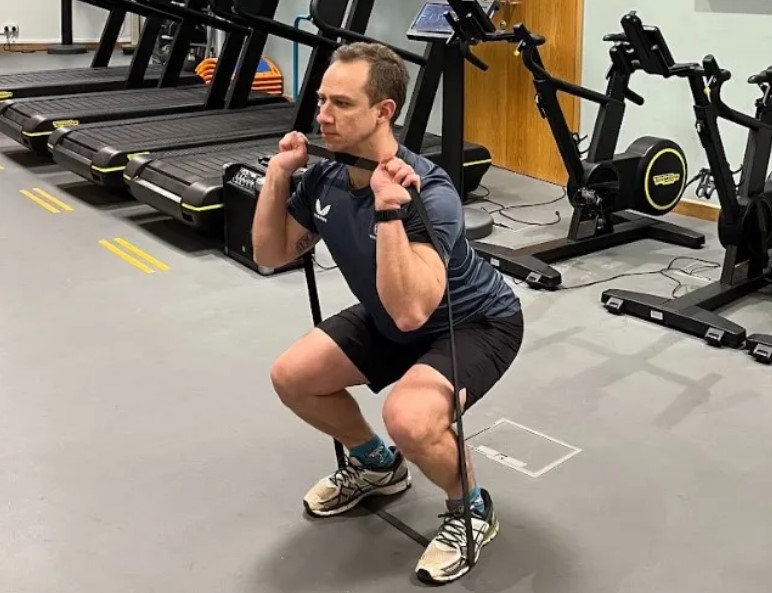Build lower-body strength and muscle with these resistance band legs workouts, as recommended by our personal trainers.
Resistance bands are ultra-versatile tools, providing a unique form of resistance that can take your leg workouts to the next level. By incorporating resistance bands into your routine, you’ll challenge your muscles in new ways, leading to improved strength, endurance and definition in your legs.
Whether you’re looking to build bigger quads, sculpt your calves, or strengthen your hamstrings, resistance bands offer a convenient and effective solution.
Resistance bands provide variable resistance, meaning that the further you stretch the band, the more resistance it provides. This progressive resistance challenges your muscles throughout the entire range of motion, leading to muscle growth and strength gains.
Using resistance bands also requires your muscles to work against the resistance for a longer period of time compared to traditional weights. This increased time under tension can stimulate muscle growth and development.
They also offer a low-impact form of resistance training, which is gentler on your joints compared to heavy weights. This can be especially beneficial for individuals with joint issues or those recovering from injuries.
Resistance bands are portable, easy to store and can be used anywhere, making them a convenient option for building muscle at home or while traveling. With resistance bands, there are no excuses for skipping a workout.
So grab a pair of resistance bands and get ready to feel the burn.
Why you can trust the workouts in Men’s Fitness
At Men’s Fitness we pride ourselves on delivering information that serves a singular purpose: to improve some aspect of your health, fitness or wellbeing. For over 16 years, we’ve been publishing authoritative health and fitness content – written by our expert editors and contributors – in the form of the monthly Men’s Fitness magazine. Each of our workouts has been created by either a highly experienced editor or expert contributor, and has been tested and used in real-world situations. These workouts have been devised by personal trainer Omar Mansour and Luiz Silva, head of fitness and wellbeing and personal trainer at Castle Royle.
Resistance band legs workout from PT Omar Mansour
Work your way through each exercise, using the timings below as a guide:
Reps: 30-45 secs
Sets: 4
Rest: 60 secs
1. Resistance Band Front Squat
2. Resistance Band Reverse Lunge
3. Resistance Band Good Morning
4. Resistance Band Kickback
5. Resistance Band Side Step
Warm-up
Before completing this legs workout, I recommend completing this resistance bands warm-up routine to prime your muscles and get your heart rate up before moving on to the more intense, strength-building moves. Diving in without warming up can lead to a less effective strength workout – or even injury – so it’s important to make time for this first.
1. Resistance band front squat
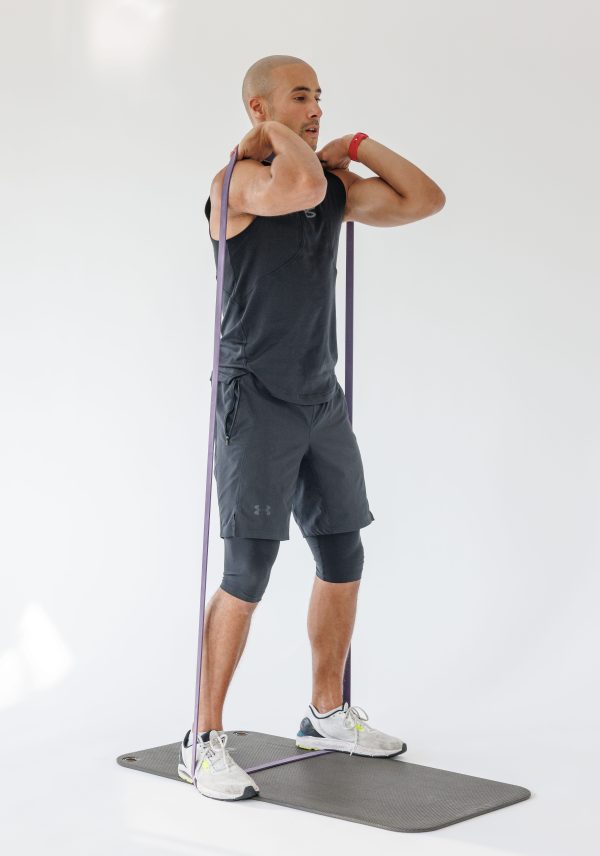
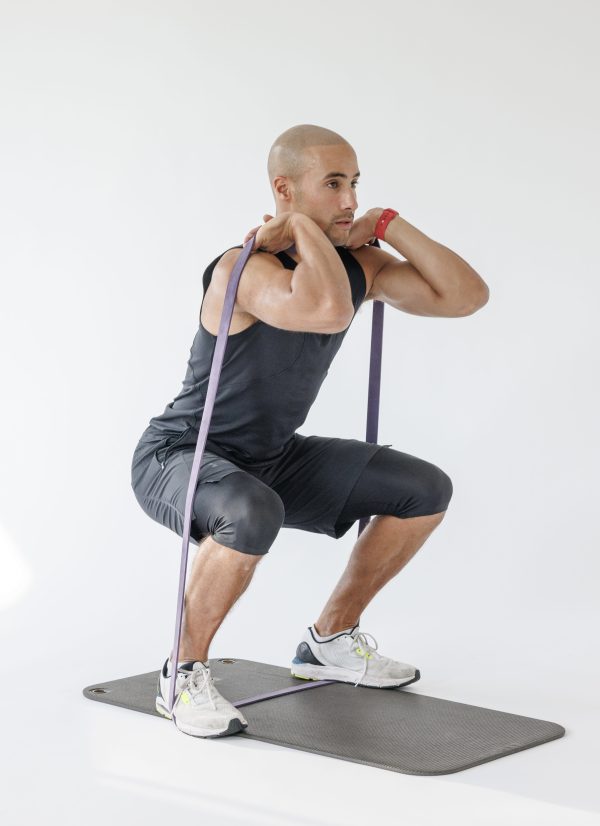
Why I like it: I almost always add a resistance band to my squats, because it helps me control the movement from start to finish. Plus it helps put greater emphasis on your glutes, quads and calves.
How to do it:
- Stand on the band with your feet shoulder-width apart
- Rack the band under your chin, palms facing the sky and elbows facing forward
- Push your hips back and bend your knees, performing a front squat while keeping your elbows high throughout and your weight over your heels
2. Resistance band reverse lunge
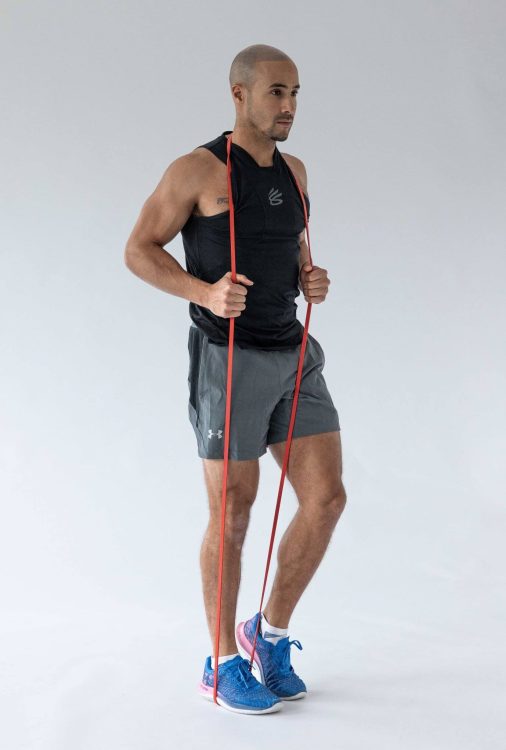
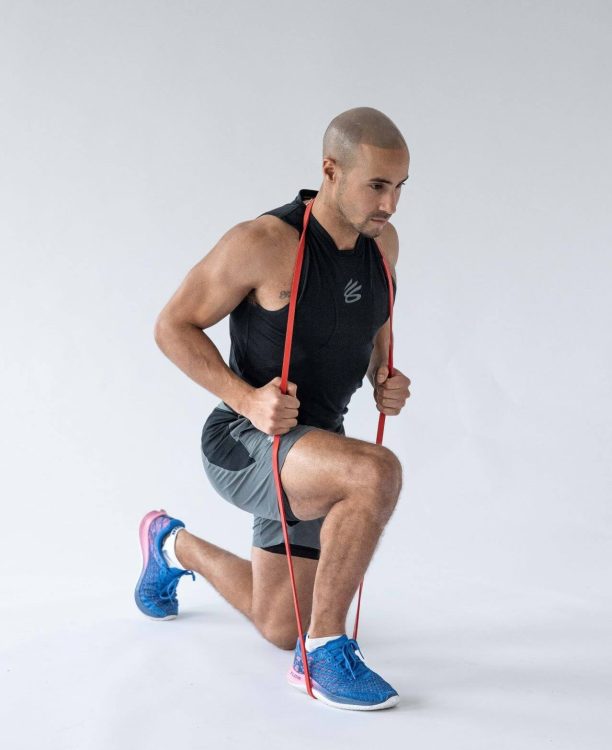
Why I like it: One of the great benefits of incorporating resistance bands into your routine is that you can start to see the benefits in just a few weeks. Using them for a reverse lunge, for example, will fairly quickly lead to improvements in muscle tone, strength and balance.
How to do it:
- While standing, loop the resistance band around your right foot and around your neck
- Keeping your upper body tall, step backward with your left foot and lower your body until both knees are bent at least 90 degrees
- Push yourself back to starting position
- Repeat with your other leg
3. Resistance band good morning
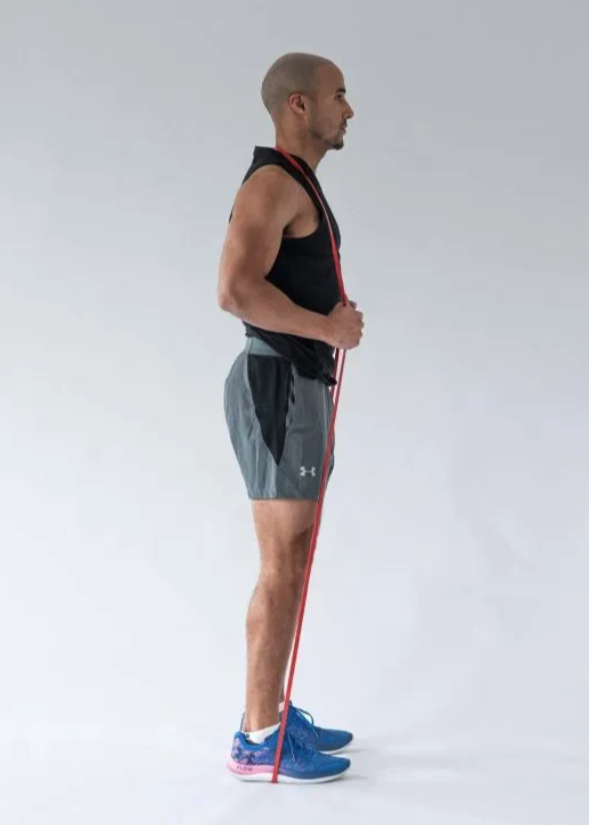
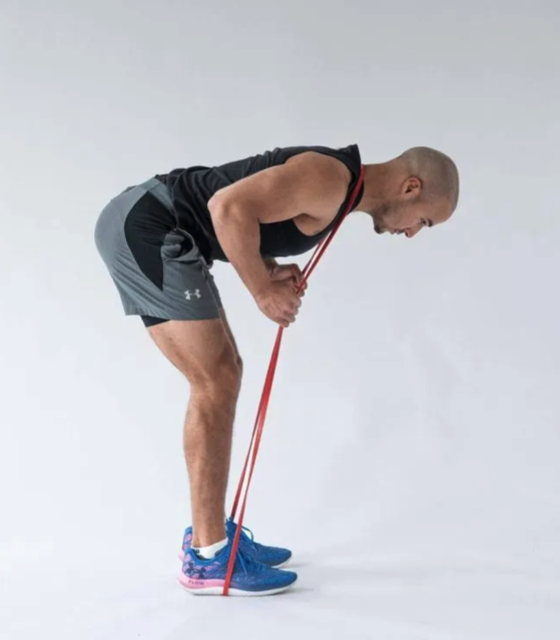
Why I like it: I love the banded good morning exercise as it has a whole host of benefits. It’s great for improving hip mobility and flexibility, as well as targeting the glutes, hamstrings and lower back.
How to do it:
- Loop a resistance band around your neck, allowing the band to rest on the top of your shoulders. Loop the other end of the band under your feet to create tension. Start with a very slight bend in your knees
- Roll your shoulders back, drawing your shoulder blades toward your spine to engage your upper back. Your shoulders should remain pulled back like this throughout the exercise
- Push your hips back as your torso naturally begins to lean forward toward the floor, keeping your legs relatively straight
- Once your torso is horizontal, squeeze your glutes forward and return to the standing position
4. Resistance band kickback
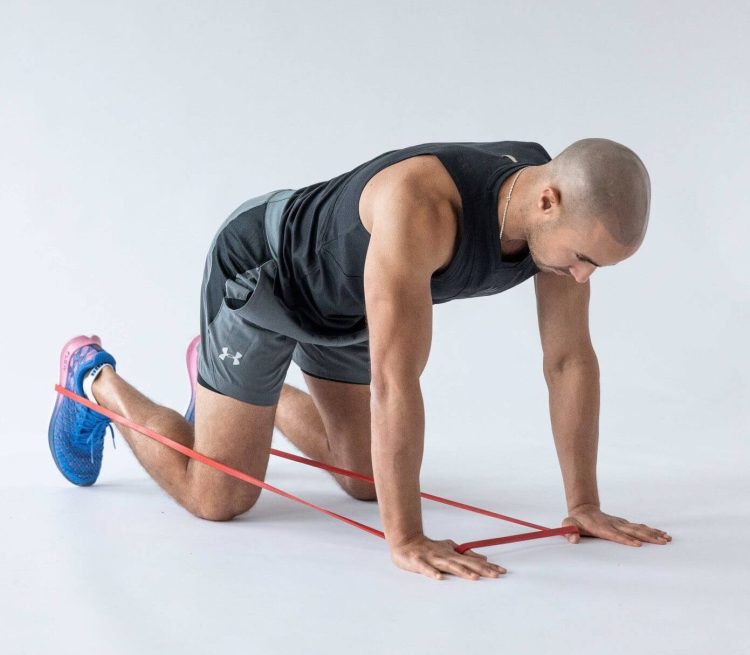
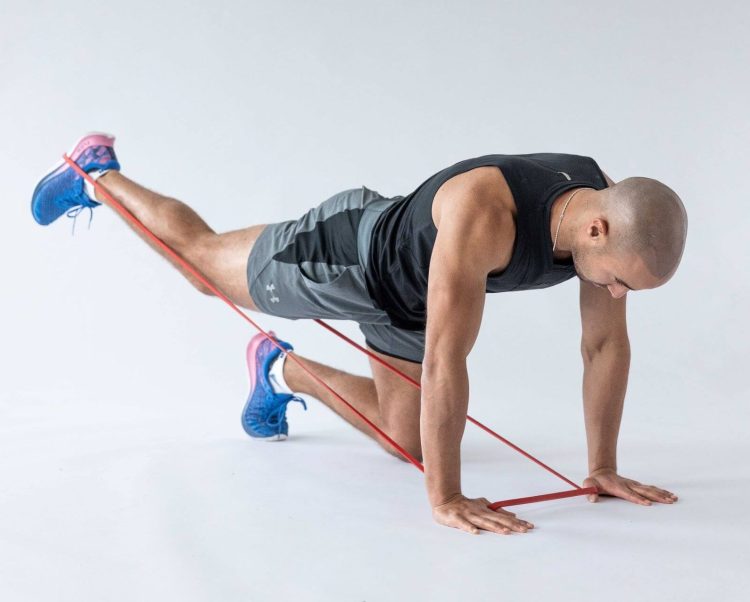
Why I like it: The banded kickback is another great exercise for working your glutes, as well as improving hip flexibility and balance. I often use this pre- and post-exercise as it’s a great warm-up / cool-down drill too.
How to do it:
- Start on your hands and knees. Have one end of the band evenly distributed under both hands. Loop the other end of the band around the sole of your foot
- Keep your hips square and core engaged as you extend your leg back
- Return to the start
- Repeat with the other foot
5. Resistance band side step
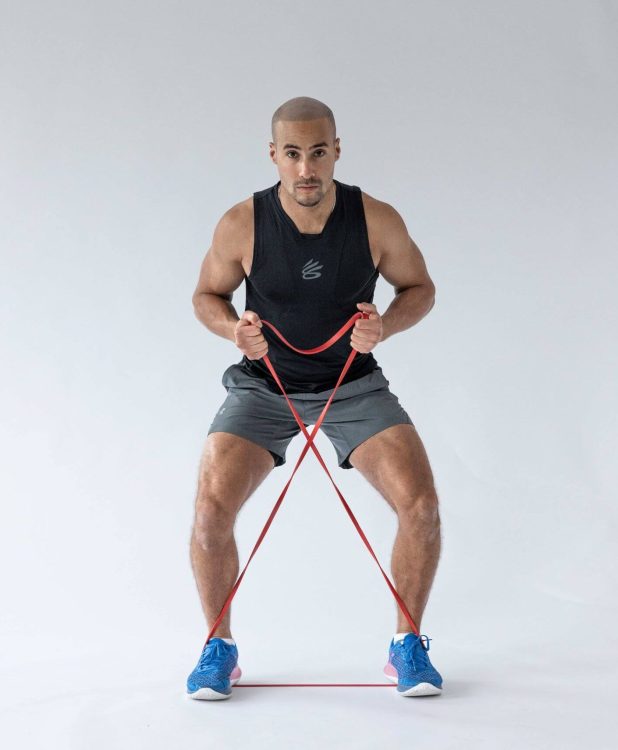
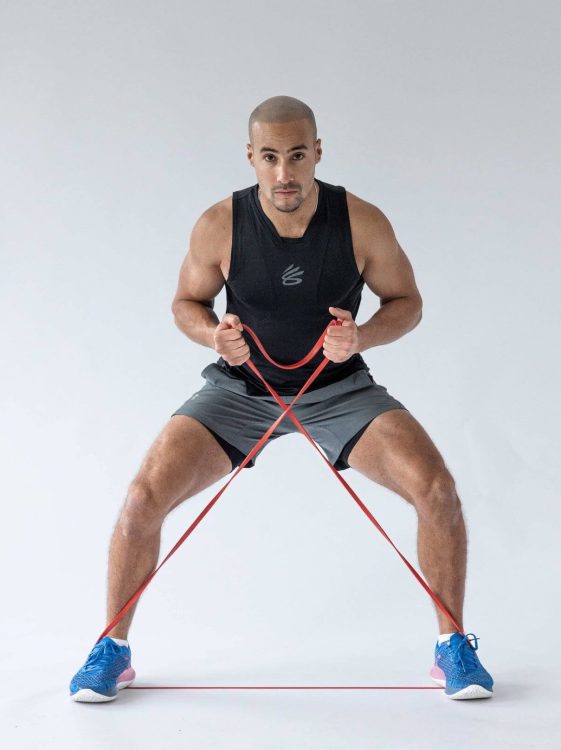
Why I like it: If, like me, you’re prone to the occasional knee niggle, banded exercises like this are excellent for building muscle strength around your knee joints. It’s another great warm-up tool too, which is why you’ll often see pro footballers doing banded side steps pre-match.
How to do it:
- Place your feet slightly apart from each other, looping one end of the resistance band underneath your feet and holding onto the other end. Form an X-shape by crossing the band in the middle
- Pull the band upwards to increase the tension
- Take small side steps one way, then the other
I recommend following your resistance band legs workout with some stretching exercises for best results.
Alternative resistance band legs workout from PT Luiz Silva
- Beginner: 20-30 second sets + 60 seconds rest (3 sets per exercise)
- Intermediate: 30-40 second sets + 60 seconds rest (3-4 sets)
- Advanced: 45-60 second sets + 30-40 seconds rest (4-5 sets)
I’d recommend doing mobility drills and warm-ups before performing these exercises.
1. Resistance band squat press
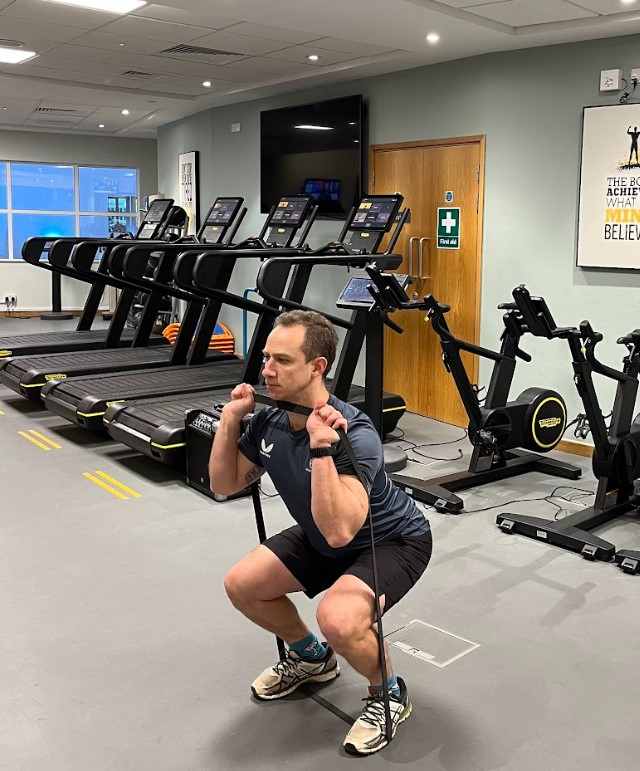
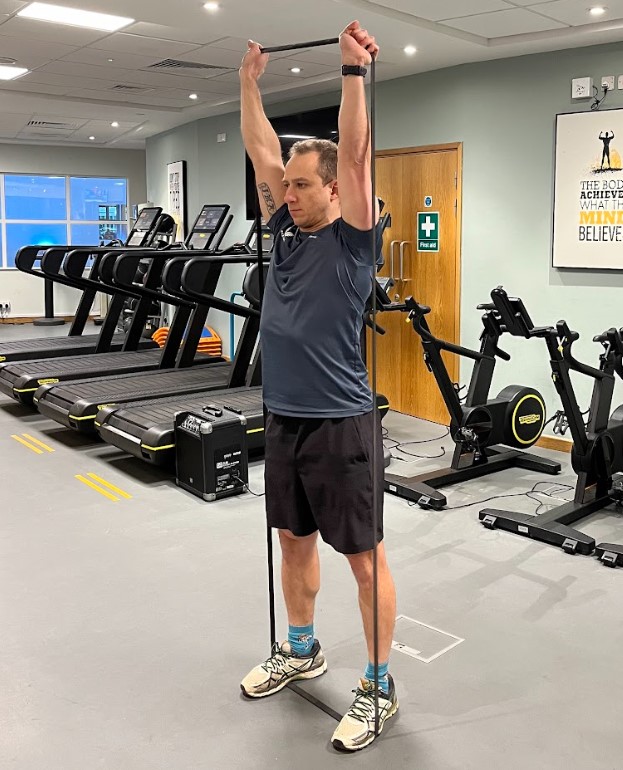
Why I like it: A compound exercise like this targets so many muscle groups. Hamstrings, quads, shoulders – tick. Abs, calves, glutes, hip flexors – tick!
How to do it:
- Stand on the band with your feet shoulder-width apart
- Hold the band with your hands just outside shoulder width, and the elbows tucked under the hands
- Push your hips back and down, bend the knees and let them track forward in line with the mid-toes. Keep your abdominal/core muscles braced tight. Feel your weight go over your heels
- Start going up by driving the heels into the floor and squeezing the glutes. At the same time, push the arms overhead to further stretch the band until the arms are almost fully extended
2. Resistance band raised reverse lunge
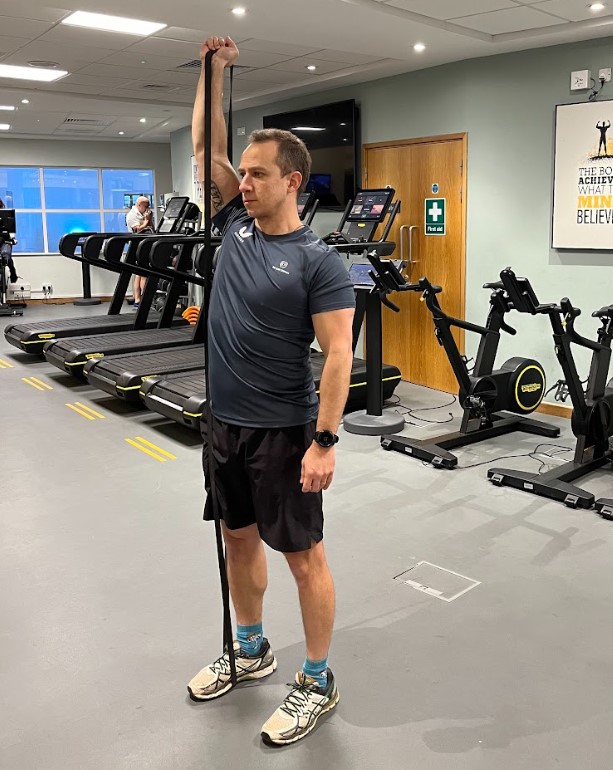
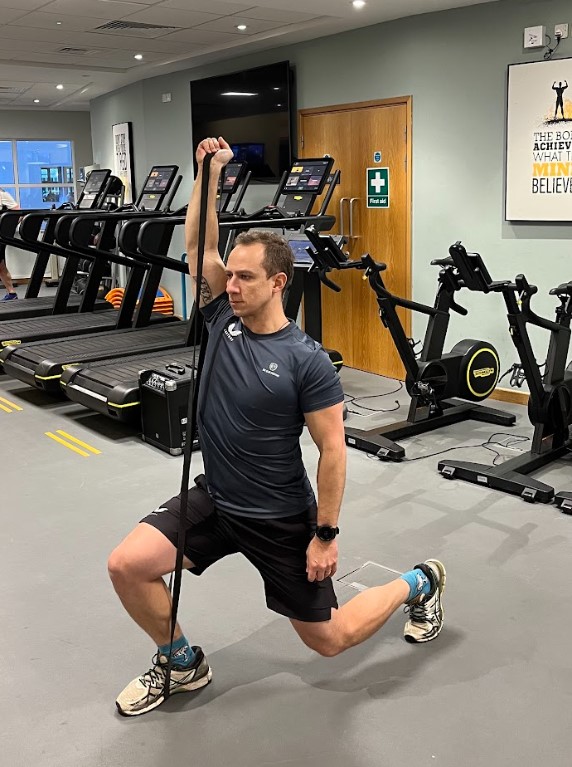
Why I like it: This banded version of the reverse lunge is a real favorite of mine. Not only does it have all the benefits of the regular reverse lunge (hitting quads, hamstrings and glutes), the unilateral arm movement helps improve balance, posture and proprioception too.
How to do it:
- While standing, loop the resistance band around your right foot and right hand. Raise your right arm straight above your head
- Keeping your upper body tall, step backward with your left foot and lower your body until both knees are bent at least 90 degrees
- Push yourself back to starting position
- Once a set is completed in the right leg, perform a set with your left leg
3. Resistance band single-leg deadlift
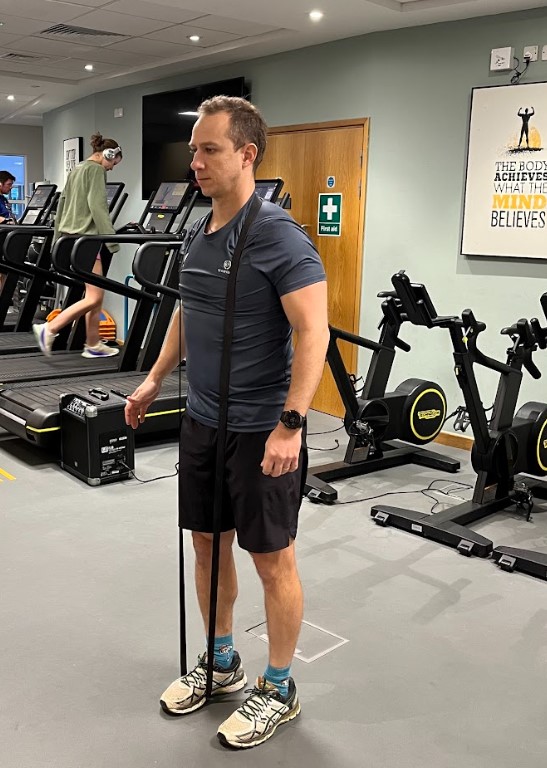
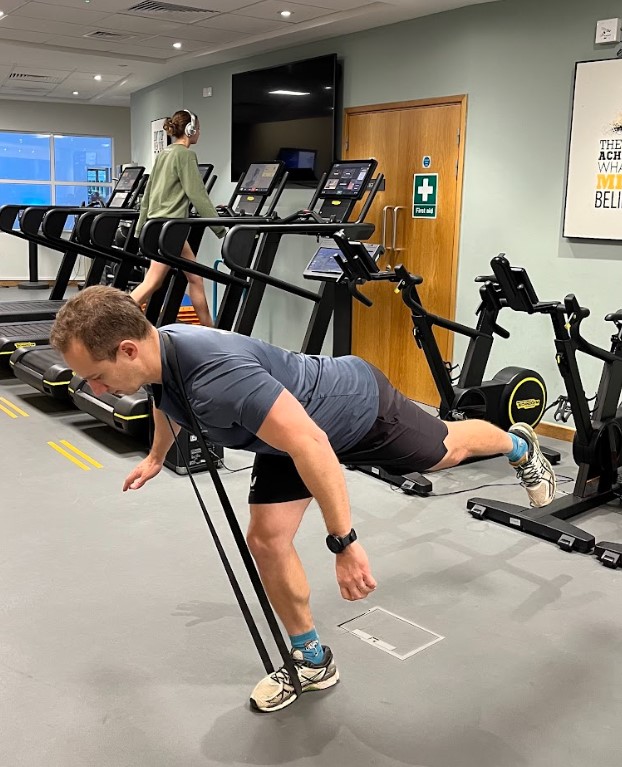
Why I like it: If you want to improve your balance, coordination and stability, the banded single-leg deadlift is the way to go. It’s great for concentrating on the posterior chain muscles too.
How to do it:
- Loop a resistance band around your neck, allowing the band to rest on the top of your shoulders. Loop the other end of the band under your right foot to create tension. Start with a very slight bend in your knees
- Roll your shoulders back, drawing your shoulder blades toward your spine to engage your upper back
- Lean your chest forward and down while keeping the back straight. At the same time, bring your left foot off the floor, push it back and straighten it, trying to maintain a straight line from head to foot. Continue the movement until the chest is parallel to the floor, or until the right hamstring starts to stretch
- Once you reach the lowest point, return to the start position while trying to maintain balance
4. Resistance band plank kickback
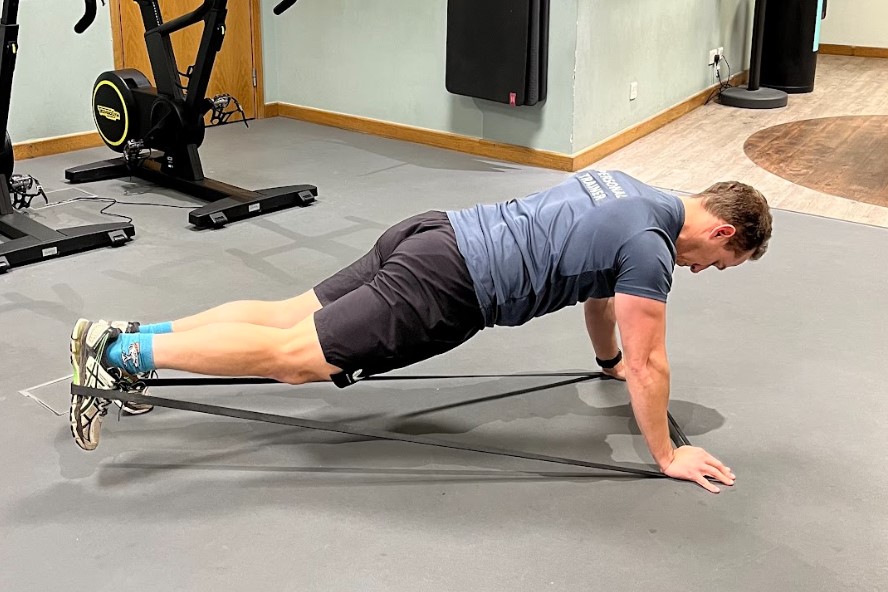
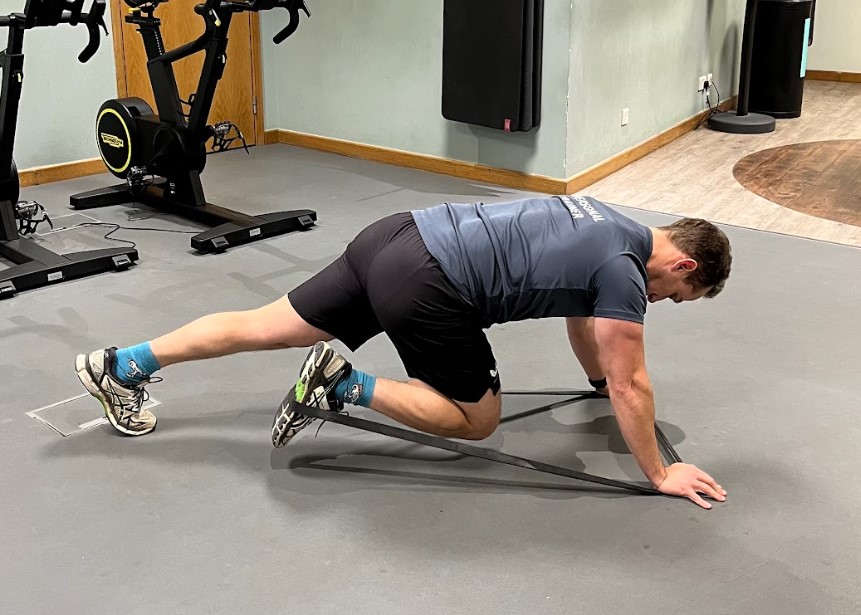
Why I like it: Not only do you feel the benefits of the kickback motion in your glutes; you also reap the abs and core benefits from the plank. Of course, both aspects help improve balance and posture too.
How to do it:
- Start on your hands and toes, with your back long, strong and straight. Your hands should be under your shoulders and the band should be evenly distributed under both hands. Loop the other end of the band around the sole of your foot
- Tuck the knee in towards the gap formed between your arms, then push your foot backwards until your leg is straight
- Return to the start
- Once a set is completed, repeat the move with the other leg
5. Resistance band side step with upright row hold
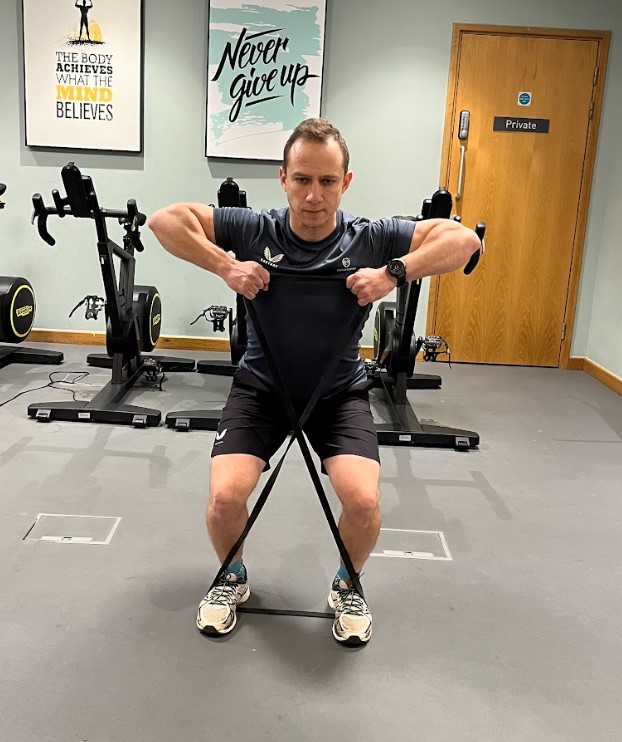
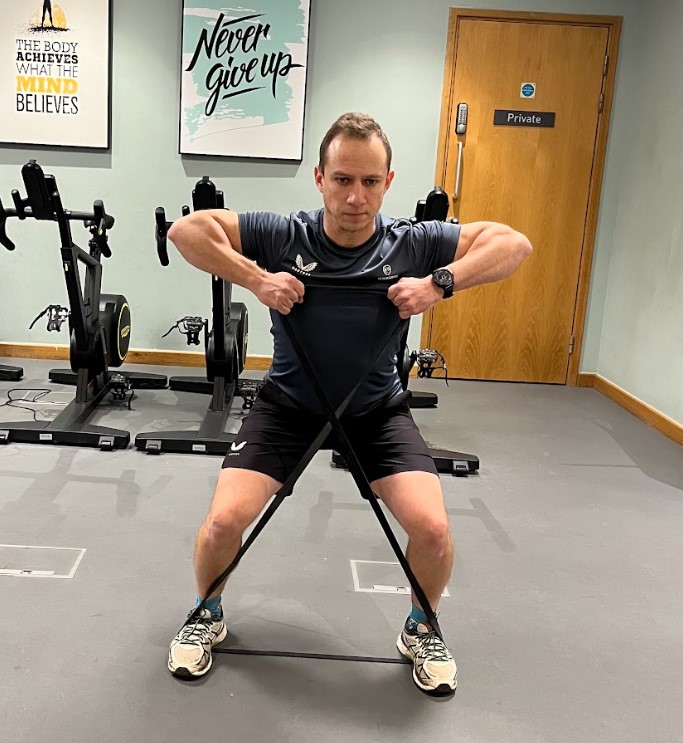
Why I like it: Another great compound move, working your hips and knees with the side-step and your back and shoulders with the upright row hold.
How to do it:
- Place your feet slightly apart from each other, looping one end of the resistance band underneath your feet and holding onto the other end. Form an X-shape by crossing the band in the middle
- Pull the band upwards and outwards until your elbows are shoulder high and you can feel a slight tension or pinch in between the shoulder blades. Hold this hand position
- Take small side steps one way, then the other
Related content:

